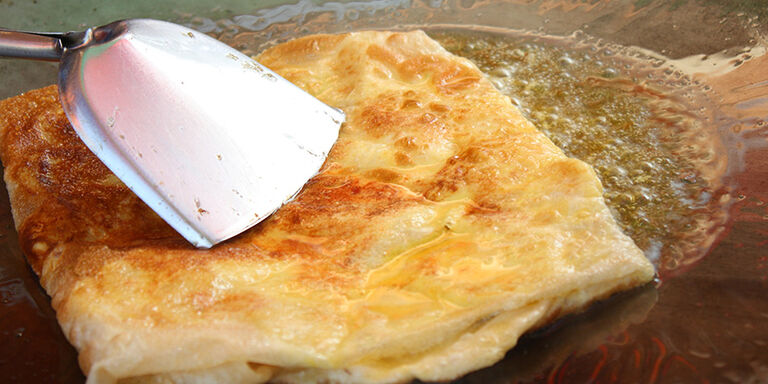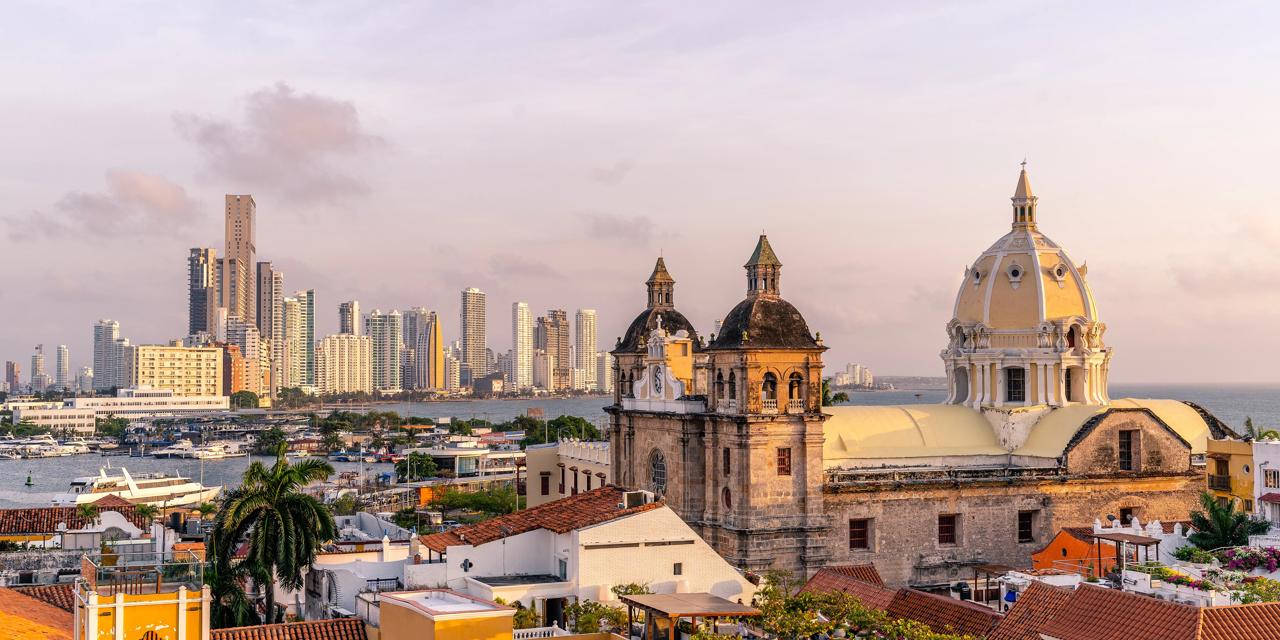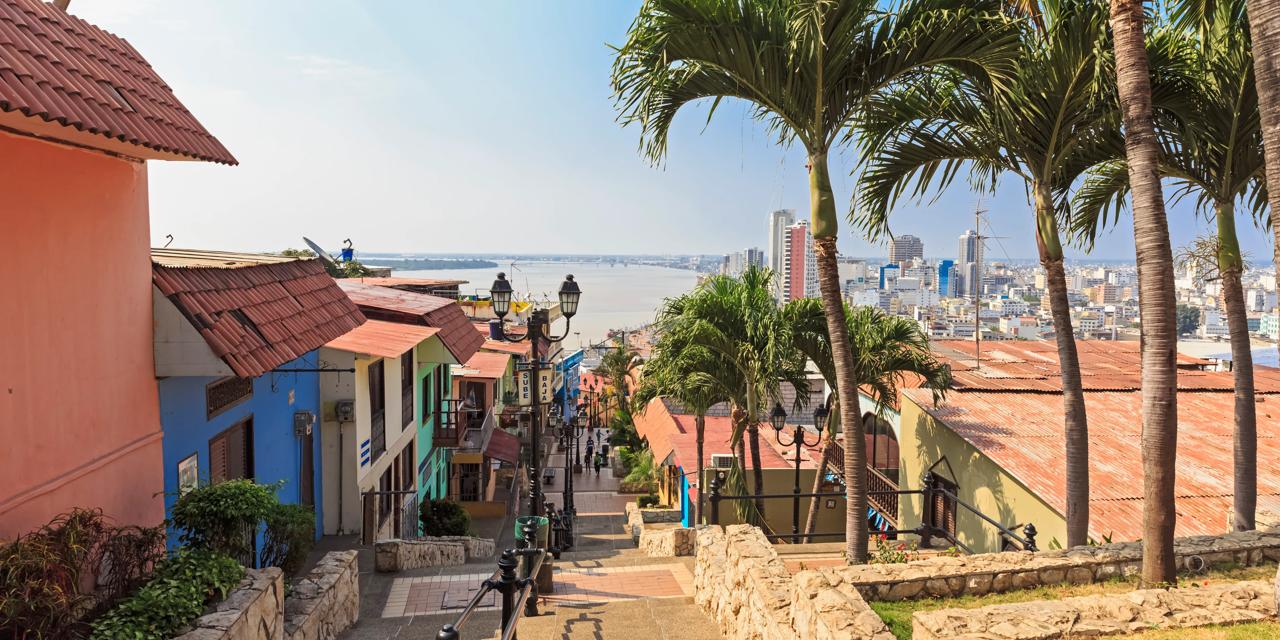The Creole kitchen
The culinary traditions of the African slaves have given Suriname some wonderful dishes such as peanut soup and 'moksi alesi', a rice dish with salted fish and vegetables. Even more famous is the ‘pom’ oven dish, often served at festive celebrations. The dish consists of tayer (a local root vegetable) puree, covered with chicken, cured meat and tomato paste. Traditionally, eating and preparing the pom was a social affair; families would pay to use the central neighbourhood oven to bake the dish. Today there is also a quicker variation of the dish: the pom sandwich.

Welcome in roti-heaven
Around a quarter of the Surinamese population is of Indian descent. After the abolition of slavery at the end of the 19th century, they came from British Guyana and India to Suriname to work as contract workers on the plantations. In their wake they brought a delicious selection of curries, samosas and roti. In Suriname, the pancake-like roti is usually served rolled up with chicken curry, potatoes and long string beans. Locals eat the dish without a knife and fork, just breaking off a piece of roti to pick up the other ingredients from the plate. The best Roti in Paramaribo can be found in specialised roti shops, such as Joosje (Zwartenhovenbrugstraat 9) or Roopram (a chain that sells more than 10 different types of roti, including chicken, egg and liver).
A Javanese evening in Blauwgrond
For a culinary and cultural experience, foodies head for dinner in the Blauwgrond district. The Javanese district of Paramaribo is home to a motley collection of ‘warungs'. These authentic eateries are usually nothing more than an extension or a veranda next to a residence. Customers sit at simple tables and the tiny kitchens serve up the most delicious Indonesian dishes. Order a ‘saoto’ soup, with chicken, egg and vegetables. Locals, expats and tourists can also enjoy sampling spicier dishes such as nasi (fried rice), bami (fried noodles) and satay (meat skewers with peanut sauce). Cool off with a refreshing ‘dawet’, an ice cold coconut drink!















